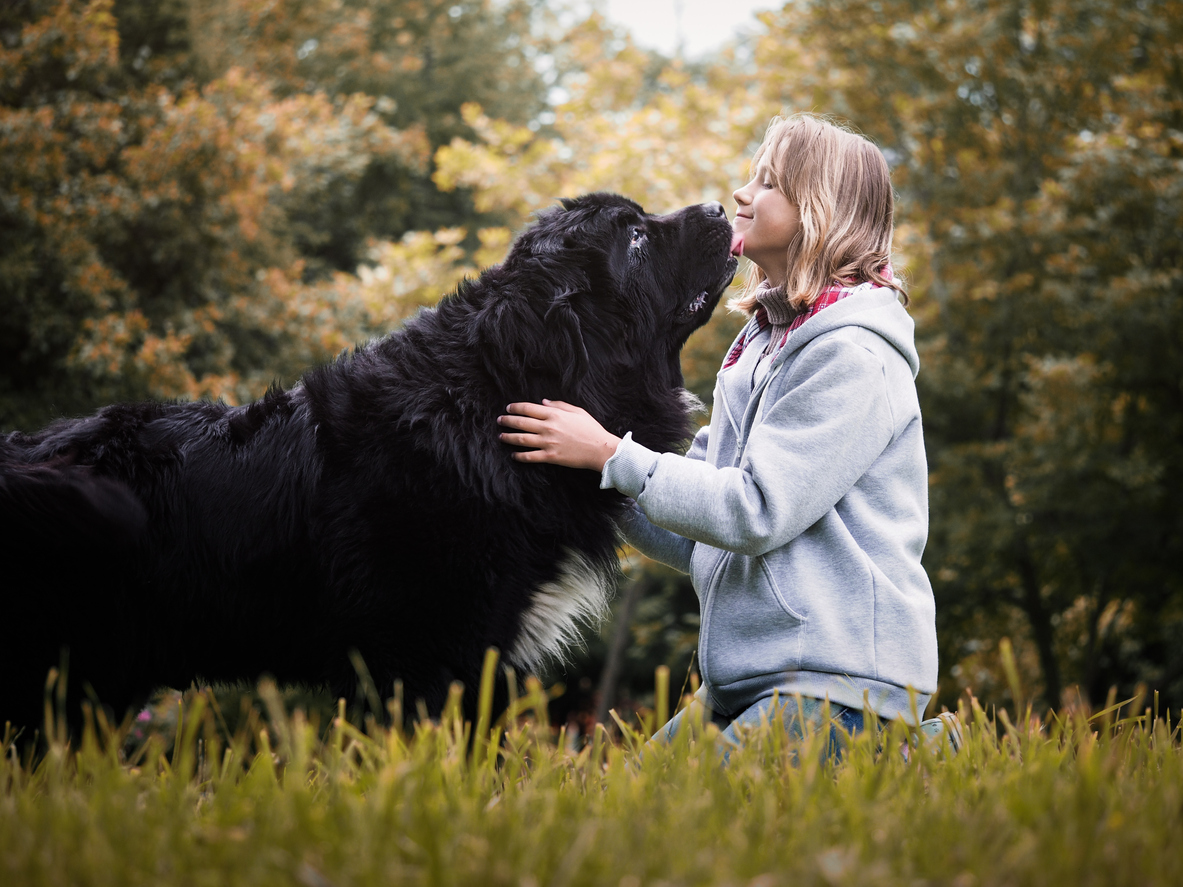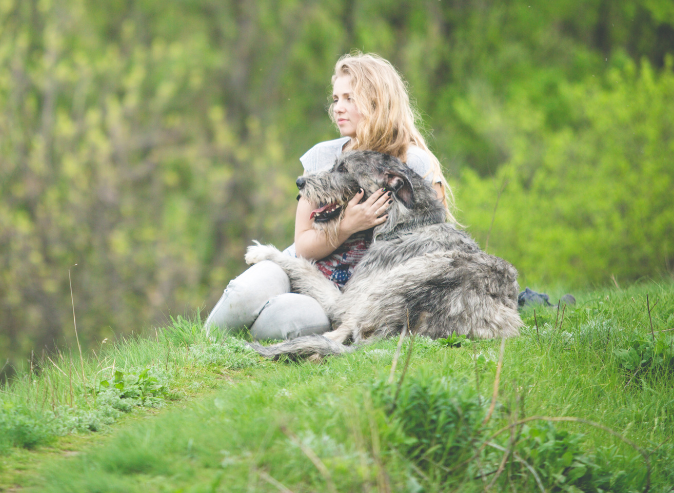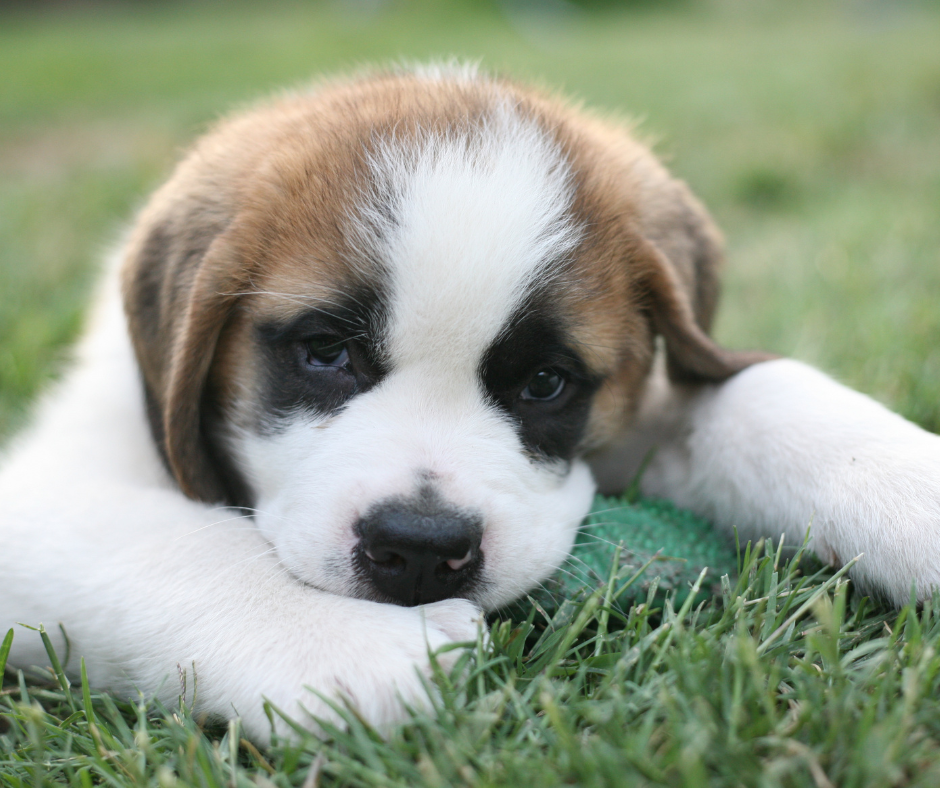Big Dog Life

Man’s best friend comes in all shapes and sizes. For some of us, the only option is to go big. Sure, they knock things over just walking through a room, and they may not be as portable as a toy poodle or as nimble as a Kelpie. But big dogs make superb companions; they can be great indoor dogs, they’re generally quieter than their mini counterparts and they’re easier to train. No matter the breed, big dogs are clever, adorable and equipped with a steady supply of super-sized love. Let’s take a closer look at big dog life.
Big Dog Breeds
Breeds like the Great Dane, mastiffs and the Irish wolfhound are the well known and popular large dog breeds. The great Pyrenees from France and the Bernese mountain dog from Switzerland are large and impressive, with beautiful, warm coats and calm dispositions. The Saint Bernard is famous for snow avalanche rescues inclusive of a medicinal nip of whisky.
Other big breeds include the Scottish deerhound, Newfoundland, Leonberger, Dogue de Bordeaux, Anatolian shepherd and the marvellous varieties resulting from crossing any of these big breeds.
Training
Training is an absolute must. According to the RSPCA, reward-based positive reinforcement is the most effective form of training. Puppy training can begin as early as eight weeks old. It should be consistent and conducted intensively. As well as teaching them the basic commands of ‘sit’, ‘stay’ and ‘heal’, it is a good time to discourage nipping and chewing. Providing dedicated chew toys and removing chew-worthy items helps.
Puppy proofing your home should also include removing breakables within tail-swinging range. As they and their tails grow, you’ll be grateful you did.
For the most part, big dogs are easier to train than small dogs. Socialisation is vital from a young age, especially if you have or plan on having a family.
Walkies
Whichever big dog breed you choose, on the street you can’t help being noticed. Lynette from the Southern Highlands, NSW, owns two-year-old bullmastiff, Jojo, and walks her daily.
‘Most people are afraid of her. They just assume she’s going to attack them,’ she says. Just about every person she passes has a reaction, more often than not involving increasing the distance between them and Jojo. ‘She’s more likely to sit on them than hurt them,’ she says. But Lynette admits that even the most well-trained and placid dog can make a mistake. ‘Let’s face it, she is huge.’ Looking into Jojo’s soppy eyes is disarming, but one can’t help noticing the size of her jaw and her teeth.
Reactions are not always negative, though. Some people are fascinated with her sheer size. ‘The most common question I’m asked is, “How much does she eat?”’

Exercise
Big dogs are adaptable, and though onlookers may wonder at such a choice for small home or apartment dwellers, a big dog can live a perfectly happy life in a small space. The trick is to learn, before adoption, what their exercise needs are – and committing to meeting them. This is especially true for big working dogs that may not be suitable for smaller homes, depending on how dedicated to exercise you are.
Bored, frustrated dogs of any size will act up and develop naughty habits if they don’t get their workout. The trouble is that with big dogs, the results of bad behaviour, such as chewing, are magnified; bigger teeth plus longer reach equals greater damage.
Sighthounds, such as the Irish wolfhound or greyhound, are fast and quarry driven, which means they are masters at spotting a moving target, thanks to their greater field of vision. Be prepared when you take them out; their breeding compels them to relentlessly chase a target, such as a sprinting cat. But these natural athletes don’t need to run the track every day. In fact, sighthounds can be rather sedentary, happy to curl up on the sofa with you for hours on end.
A large dog may seem like an obvious choice for runners, though that is not generally the case. Large breeds are susceptible to joint and bone issues. Excessive running before their bones have matured can cause long-term damage. Your vet will give advice on running with your king-size canine. The development of every breed regardless of size is different, but expect up to two years before their musculoskeletal frame becomes mature. If you are committed to running with your dog, consider one of the working or sporting dog breeds, which are bred for this kind of activity and movement.
Health
In addition to clearance for regular running, your vet will also advise you on any other issues unique to their breed and size. In general, large dog breeds can be more prone to hip dysplasia or arthritis.
Hip dysplasia is a condition of the hip joint. A shallow hip socket or an irregular femur ball are the causes of hip dysplasia. While it is inherited, not all puppies will take on this genetic trait. According to Dogs NSW, 25-40% of puppies inherit hip dysplasia. Registered breeders should provide a report on the health of the puppy’s parents.
Another aspect of big dog life worthy of a moment of thought is that large dogs generally have a shorter lifespan than small dogs.
It makes sense that big dogs need big meals, which can affect the budget, especially if you plan on feeding your dog top-quality meals. As well as large food and water bowls, consider a mat; big dogs are notoriously messy eaters. And what comes in must go out. Poo pick-up in the garden will need to occur more frequently with a big dog.
protection
These joyful giants make marvellous guard dogs; their sheer size acts as an effective deterrent, regardless of their ability to fight off an attacker. Big dog guardians naturally feel safer in their company.
However, a larger dog does not always mean greater courage. They are just as prone to developing a fear of things like thunder, noisy vehicles, balloons and car trips.
THE FINAL WORD
Big dogs are a prime choice of canine company. Though they be messy eaters, produce whopping great poos and unintentionally cause damage, they are generally adaptable to most living situations. Big dog life includes satisfying their exercise needs, and socialising and training from a young age. Do these things and you’ll receive years of loyal large companionship and the biggest cuddles for years to come.


